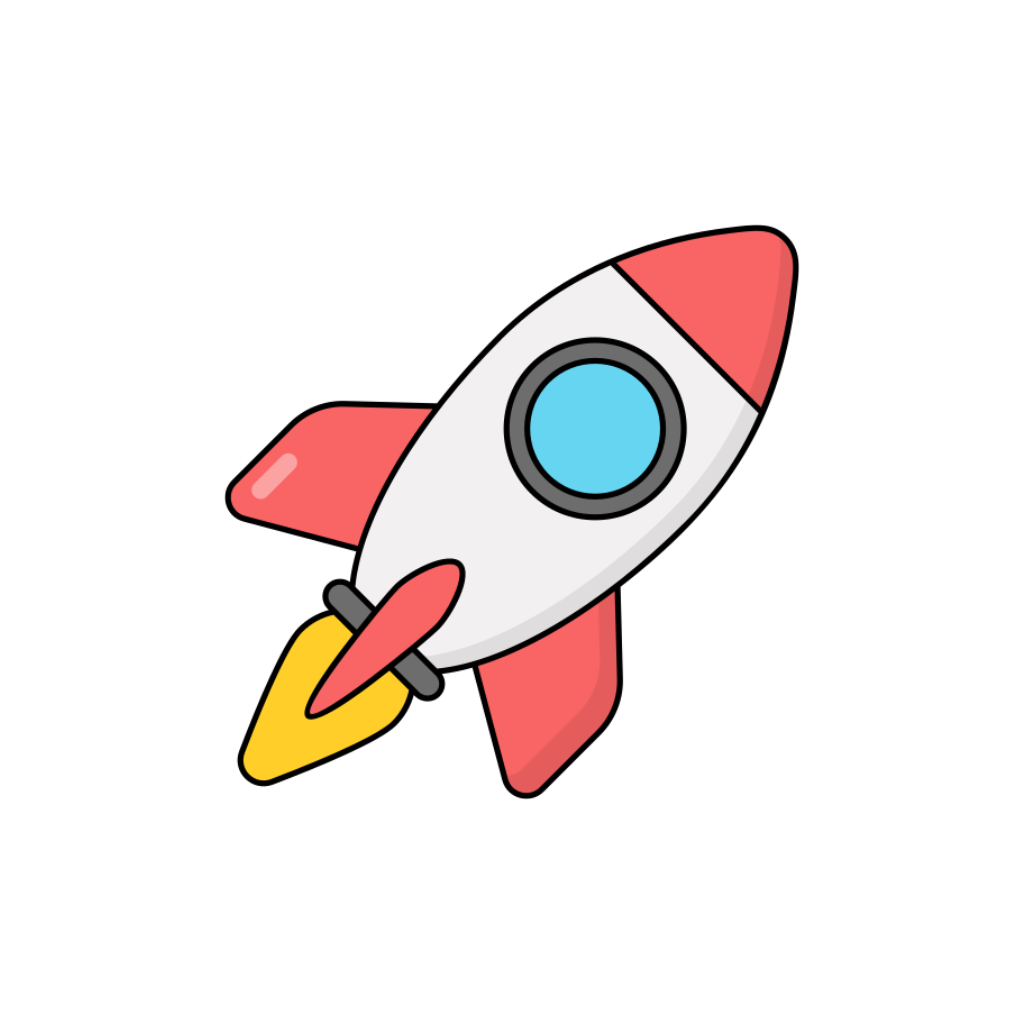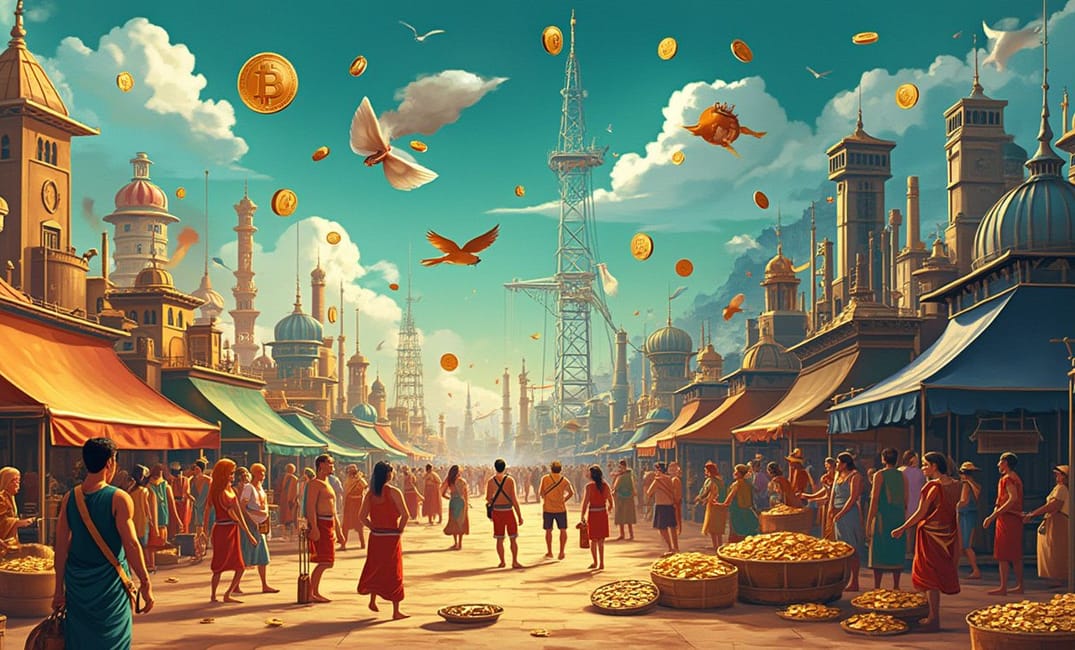Introduction: The Evolution of Human Economies
Human economies have evolved through millennia, transforming from rudimentary barter systems to complex global financial networks. This evolution reflects humanity's adaptability and creativity in resource management, trade, and development. This entry explores how economies have shaped societies, driven technological advancements, and influenced cultural exchanges, from early trade systems to contemporary digital economies.
Ancient Economies: Barter and Early Trade Systems
The Beginnings of Exchange
- Primitive Barter Systems: In prehistoric times, people exchanged surplus goods in barter systems, relying on mutual needs to facilitate trade. Goods like flint tools, grains, and textiles were traded directly, laying the groundwork for wider economic structures.
- Emergence of Currency: As societies expanded, barter became inefficient. The need for standardized exchange led to the use of proto-currencies—objects like shells, seeds, and metal pieces that had intrinsic or widely recognized value.
Mesopotamian and Egyptian Trade
- Mesopotamian Innovation: Ancient Mesopotamia introduced early banking and credit systems, with temples recording transactions on clay tablets. This system allowed for deferred payments and complex trade agreements, promoting economic growth.
- Egyptian Trade Networks: The Nile fostered trade in gold, papyrus, and grain within Egypt and beyond. Egyptian traders engaged in barter with Mediterranean and African cultures, integrating luxury goods like incense and precious metals into their economy.
Classical Economies: Rise of Coinage and Commerce
Greek and Roman Innovations
- Greek City-States and Coinage: Greek city-states were among the first to mint coins, standardizing transactions across territories. Coins bore royal insignia, ensuring trust and facilitating commerce among diverse city-states and foreign markets.
- Roman Economic Expansion: The Roman Empire constructed vast road networks and maritime routes, paving the way for extensive trade in goods like olive oil, wine, and pottery. Roman law and taxation bolstered economic stability, while coinage unified transactions across the empire.
Indian Ocean and Silk Road
- Maritime Trade Dynamics: The Indian Ocean trade connected African, Arabian, and Indian merchants. Dhows and other vessels transported spices, textiles, and ceramics, forming a maritime network of cultural and commercial exchange.
- The Silk Road: This land-based trade route linked the East and West, facilitating the exchange of silk, spices, and knowledge between Chinese, Indian, Persian, and Roman civilizations. Caravanserais and trade hubs emerged, fostering intercultural connections and economic growth.
Medieval Economies: Guilds, Trade Routes, and Innovation
The European Marketplaces
- Medieval Guilds: Guilds regulated trades, ensuring quality, training, and fair wages. They played a crucial role in the economic dynamism of medieval Europe, fostering skill specialization and local production.
- Hanseatic League: This alliance of Northern European port cities controlled Baltic maritime trade, establishing banking systems and trade regulations that spurred economic cohesion and prosperity.
Islamic and Asian Economies
- Islamic Trade and Scholarship: The Islamic Caliphates facilitated trade across Africa, Asia, and Europe. Urban centers like Baghdad became hubs of scholarship and commercial innovation, with merchants exchanging textiles, books, and science.
- Song Dynasty’s Economic Power: The Song Dynasty in China saw the rise of paper money, agrarian reform, and maritime trade. Innovations in iron production and textile manufacturing bolstered internal commerce and international trade routes.
The Early Modern Era: Mercantilism and Industrialization
European Expansion and Colonization
- Age of Exploration: European powers, driven by mercantilism, adjusted economic policies to amass wealth through colonies. The extraction of resources from the Americas, Africa, and Asia transformed global trade dynamics, often with detrimental impacts on indigenous populations.
- Transatlantic Slave Trade: This dark chapter of human economy, driven by European demand for labor in sugar and cotton plantations, reshaped populations and economies across continents, with lasting global repercussions.
The Industrial Revolution
- Technological Transformations: The Industrial Revolution redefined economies, shifting from agriculture to mechanized manufacturing. Innovations such as the steam engine and spinning jenny produced mass goods, fostering urbanization and trade expansion.
- Capitalism and Financial Systems: Emerging capitalist economies introduced banking, stock exchanges, and investment systems that supported entrepreneurial ventures, transforming economic landscapes and enabling industrial powers to expand globally.
Contemporary Economies: Globalization and Digital Transformation
The Global Economic Framework
- Post-WWII Economic Order: Institutions like the International Monetary Fund (IMF) and World Trade Organization (WTO) emerged, governing global trade and finance to stabilize economies and promote international exchanges.
- Diverse Economic Models: Various models—from socialist to free-market capitalism—emerged, reflecting cultural and political differences, impacting economic strategies and policy-making across nations.
The Digital Economy and Beyond
- Internet Revolution: The digital era reshaped economies through e-commerce, online banking, and decentralized finance. Platforms like Amazon and Bitcoin emerged, altering the traditional notions of trade and currency.
- Sustainability and Circular Economies: New paradigms such as sustainability-focused economic models and circular economies aim to recycle resources, reduce environmental impact, and create equitable growth opportunities.
Future Economies: Blockchain, AI, and Beyond
Technological Innovations Driving Change
- Blockchain and Cryptocurrencies: Blockchain technologies promise secure, transparent digital transactions, disrupting financial landscapes. Cryptocurrencies challenge traditional currencies, fostering decentralized economic models and global exchanges.
- Artificial Intelligence and Automation: AI is poised to transform industries, potentially reshaping labor markets and influencing productivity across sectors. This raises ethical and economic considerations for future workforce dynamics.
Global Challenges and Opportunities
- Climate Change and Resource Management: Economies face the imperative of addressing climate change, emphasizing sustainable practices and renewable energy investments to ensure long-term prosperity while preserving ecological balance.
- Global Cooperation and Equity: Future economy strategies must balance innovation with equity and access, fostering inclusive development that bridges wealth divides and supports resilient global infrastructure.
Conclusion: Humanity's Economic Evolution
The evolution of human economies exemplifies adaptability, ingenuity, and resilience. From barter systems and early trade routes to internet marketplaces and blockchain technology, economies have consistently catalyzed societal development and cultural exchange. As new technologies emerge and global challenges loom, understanding economic history becomes crucial for navigating the future with sustainability, equity, and innovation.
"Human economies are the engines of ingenuity—constantly evolving mechanisms that transcend mere exchange to shape societies, cultures, and the shared pursuit of progress." — *Author Unknown*
TRADE, BLOCKCHAIN, ECONOMY, GLOBALIZATION, INNOVATION, CRYPTOCURRENCY, SUSTAINABILITY, HISTORY, TECHNOLOGY

